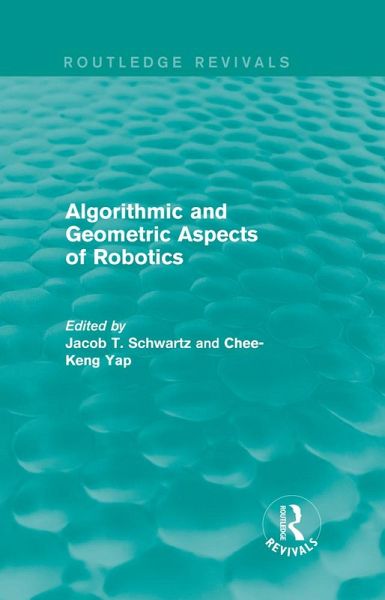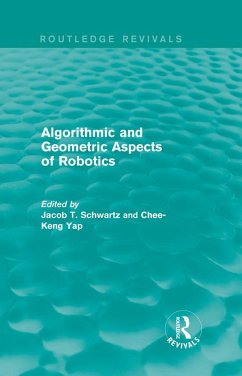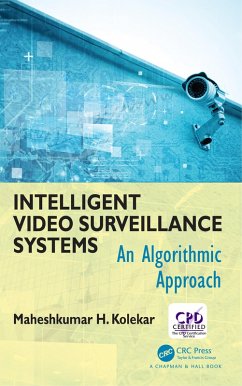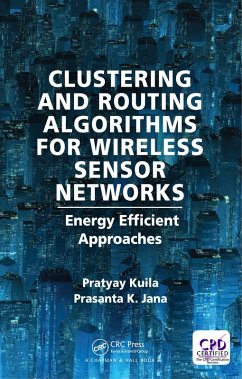
Algorithmic and Geometric Aspects of Robotics (Routledge Revivals) (eBook, ePUB)
Versandkostenfrei!
Sofort per Download lieferbar
33,95 €
inkl. MwSt.
Weitere Ausgaben:

PAYBACK Punkte
17 °P sammeln!
First published in 1987, the seven chapters that comprise this book review contemporary work on the geometric side of robotics. The first chapter defines the fundamental goal of robotics in very broad terms and outlines a research agenda each of whose items constitutes a substantial area for further research. The second chapter presents recently developed techniques that have begun to address the geometric side of this research agenda and the third reviews several applied geometric ideas central to contemporary work on the problem of motion planning. The use of Voronoi diagrams, a theme opened...
First published in 1987, the seven chapters that comprise this book review contemporary work on the geometric side of robotics. The first chapter defines the fundamental goal of robotics in very broad terms and outlines a research agenda each of whose items constitutes a substantial area for further research. The second chapter presents recently developed techniques that have begun to address the geometric side of this research agenda and the third reviews several applied geometric ideas central to contemporary work on the problem of motion planning. The use of Voronoi diagrams, a theme opened in these chapters, is explored further later in the book. The fourth chapter develops a theme in computational geometry having obvious significance for the simplification of practical robotics problems - the approximation or decomposition of complex geometric objects into simple ones. The final chapters treat two examples of a class of geometric 'reconstruction' problem that have immediate application to computer-aided geometric design systems.
Dieser Download kann aus rechtlichen Gründen nur mit Rechnungsadresse in A, B, BG, CY, CZ, D, DK, EW, E, FIN, F, GR, HR, H, IRL, I, LT, L, LR, M, NL, PL, P, R, S, SLO, SK ausgeliefert werden.













